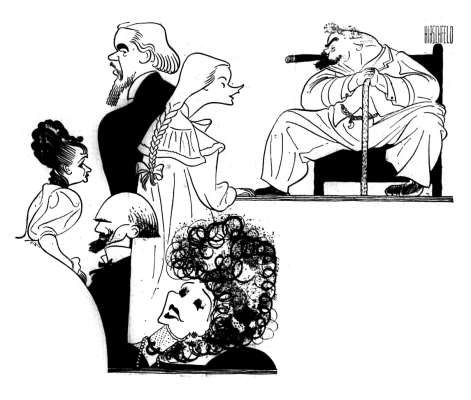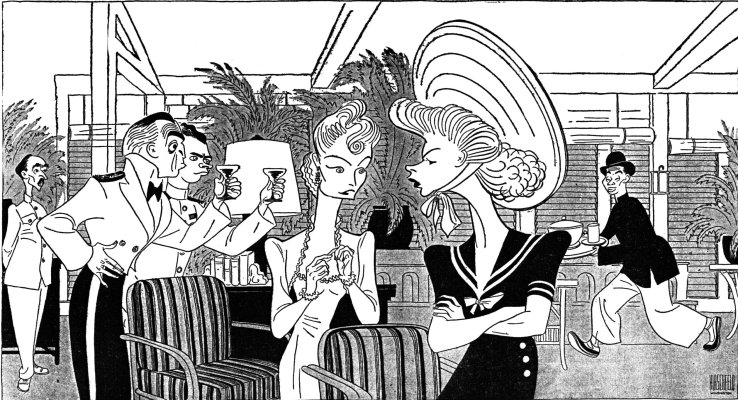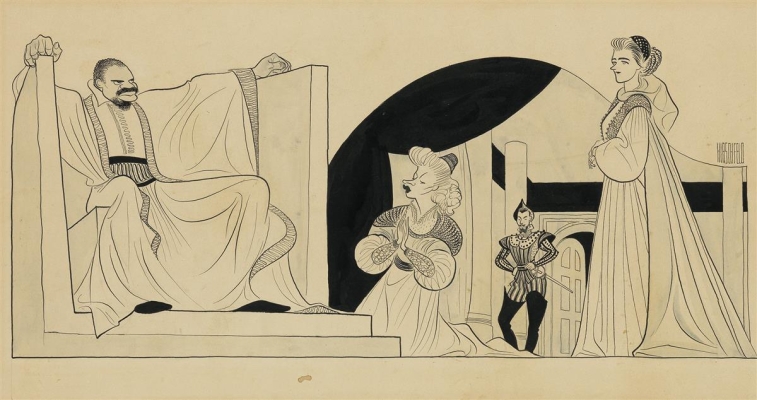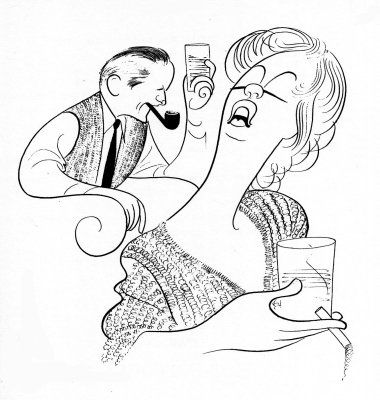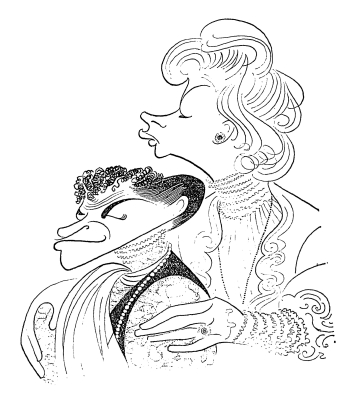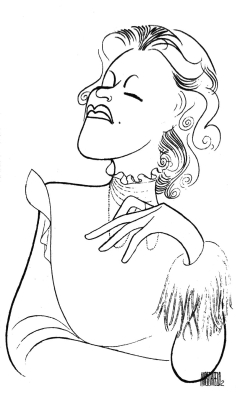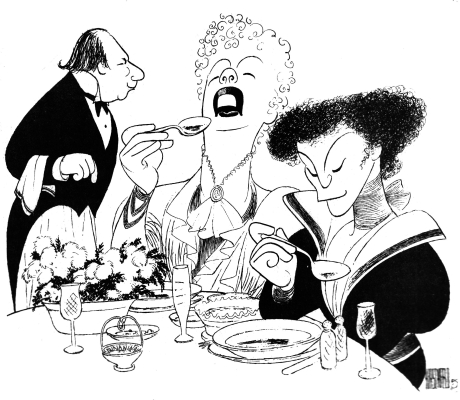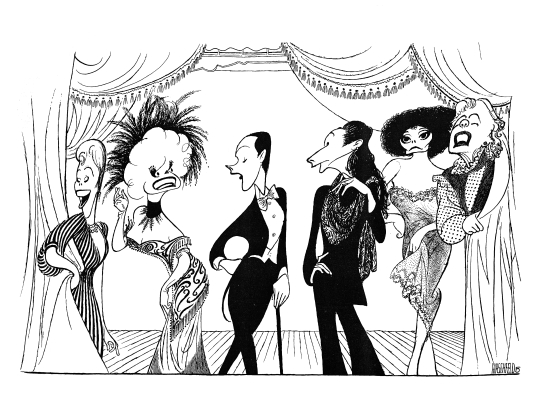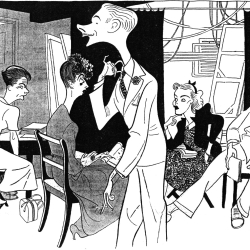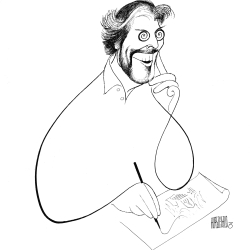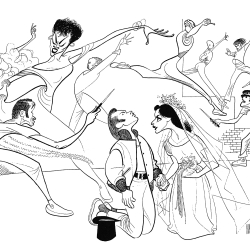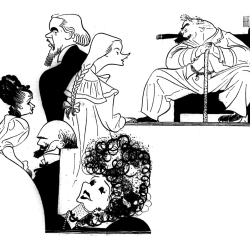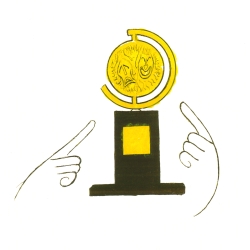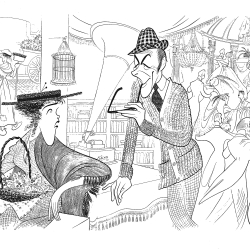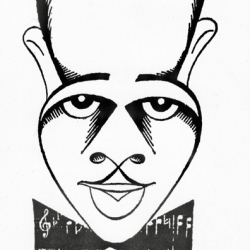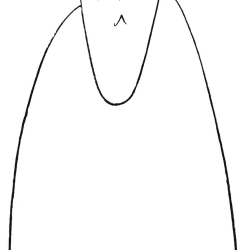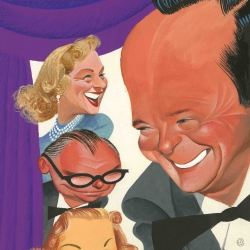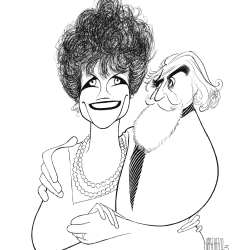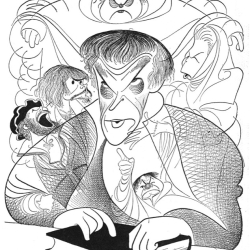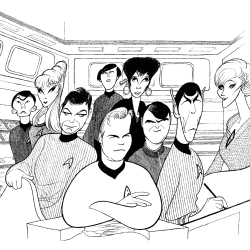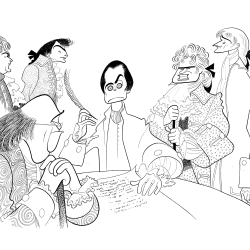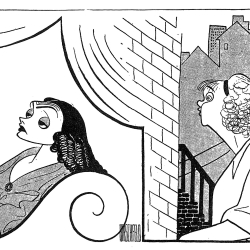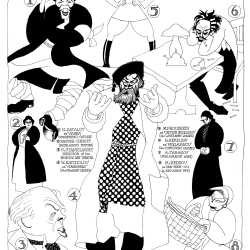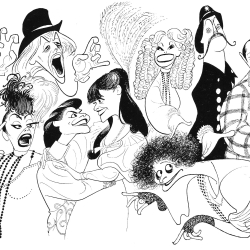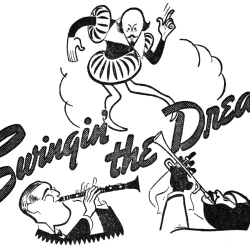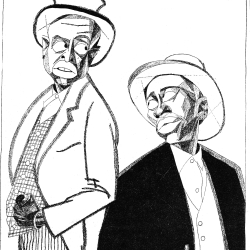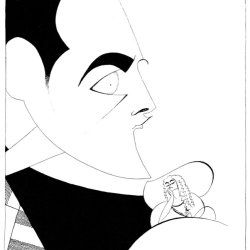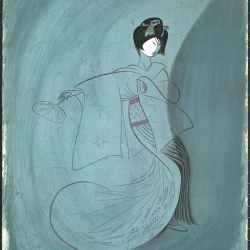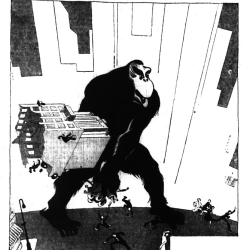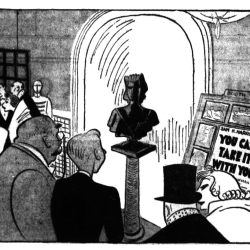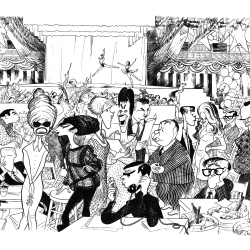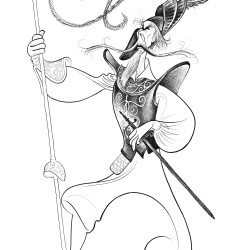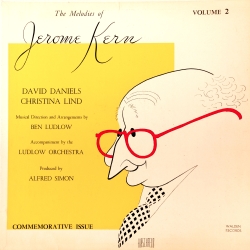Uta Hagen and Al Hirschfeld
Born in Göttingen, Germany, Uta Hagen (1919-2004) was only six years old when she was taken to Berlin to see Saint Joan. The little girl was mesmerized and decided to pursue a career in the theater. She was destined to become one of the most acclaimed actors and acting teachers of the 20thcentury, and a regular subject for the pen of Al Hirschfeld.
Uta emigrated to the United States in 1925, when her father accepted a position at the University of Wisconsin. In 1983, she wrote, “My brother acted in the summers, and somehow, when I’d turned fifteen, he convinced the other actors at the University of Wisconsin to let me play his sister in Hay Fever. I’m not so sure what Noël Coward would have said, but with the local people there, we had a great success. I started to believe, perhaps I was an actress.” From her youthful triumph in Hay Fever, Uta went on to play Ophelia to Eva Le Gallienne’s Hamlet on Cape Cod. Her next triumph, in 1938, was her Broadway debut as Nina in The Seagull with the Lunts. InThe New Yorker Robert Benchley wrote, “I venture to say that Miss Hagen is a definite find.” The Seagull was also noteworthy for being the first time Uta, then just 18 years old, was drawn by Hirschfeld.
In the early 1940s, the paths of Al and Uta crossed three times. In the autumn of 1941, José Ferrer (Uta’s then husband) co-produced and directed The Admiral Had a Wife. The critic of the Wilmington Journal wrote: “Miss Hagen ought to benefit tremendously from her assignment. The prediction here is, that unless something unforeseen happens, she’ll be the talk of Broadway within a month…” Sadly, a comedy about naval officers and their wives stationed at Pearl Harbor did not have its scheduled opening on December 8, 1941, because of the bombing of Pearl Harbor the day before. The following year Hirschfeld drew Uta again, in Vickie, a play about women in wartime.
The revolutionary and courageous production of Othello that opened on October 19, 1943 represents a landmark in theater history and remains the longest-running production of a Shakespeare play ever on Broadway. It was the first major Shakespeare production in America starring a African American actor, Paul Robeson, opposite a white leading lady, Uta Hagen, and featured Broadway’s first interracial kiss. Hirschfeld’s caricature emphasizes the power and majesty of the four leading characters, who also included José Ferrer as Iago and Margaret Webster, who also directed, as Emilia. Regarding the tour, Uta later recalled: “We were the first Equity company to go out and refuse to play segregated audiences. That was unheard of even as a concept.”
In 1948, the management of A Streetcar Named Desire was casting the road company for the show, and Uta was offered the role of Blanche. Before the tour, Uta played with the original Broadway company, filling in for Jessica Tandy during Tandy’s vacation. After touring with Anthony Quinn as Stanley, Uta and Quinn returned to Broadway for Streetcar’s final engagement, opening at City Center on May 23, 1950. Two days earlier, Hirschfeld’s drawing of the two leads appeared in The New York Times. Years later, when Kim Hunter, the original Stella, was asked, “Who was the best Blanche,” she replied “Uta.”
On July 20, 1962, Uta noted in her diary: “I received Who’s Afraid of Virginia Woolf by Albee in the morning at HB Studio. After class I ran home and started reading Who’s Afraid. Albee is an extraordinary writer. I was very gripped by the play.” The next day she told Albee that his play was like a great modern Bosch canvas. Uta’s towering performance as Martha quickly became her signature role. She won her second of three Tony Awards for her performance. For reasons unknown, Hirschfeld was not assigned to draw this remarkable production at the time. In 1973, Brooks Atkinson selected Who’s Afraid of Virginia Woolf for the book The Lively Years, his overview of the socially significant plays of the last half-century. The book included more than 50 new Hirschfeld drawings, including one of Uta and Arthur Hill in the play.
Hirschfeld also captured Uta’s 1968 performance in Chekhov’s The Cherry Orchard with Nancy Walker, in a production directed by Le Gallienne. In 1986, Uta was drawn in two plays by her beloved George Bernard Shaw: Mrs. Warren’s Profession and You Never Can Tell. The last time Hirschfeld would feature Uta in his drawings was in 1995, in a drawing of “Leading Ladies”, where Uta was joined onstage by five of her contemporaries who were all opening in shows on and off Broadway that season. Uta was about to play the title role in Mrs. Klein in her penultimate New York stage production.
In a ceremony on March 6, 2003, the National Medal of Arts, the highest medal awarded to artists by the United States government, was presented to honorees at the White House. Among the recipients were two giants of the American theater: Al Hirschfeld and Uta Hagen. Sadly, Hirschfeld had passed away six weeks earlier, although he had been informed of the honor that was to be bestowed upon him. Uta, though ill, was able to attend the ceremony. Al was honored for his work as an artist and caricaturist; Uta for her work as actor and educator. In Uta Hagen’s centennial year, it is a special pleasure to be reminded of her remarkable career through the immortal drawings of Al Hirschfeld.
Alan Pally
Alan Pally is a member of the Board of Directors of HB Studio, where Uta Hagen, together with her husband Herbert Berghof, trained some of the most noted actors in American theater. Pally curated the opening program at HB in February and engaged the involvement of the New York Public Library for Performing Arts, including the exhibit and the three public programs at LPA.
